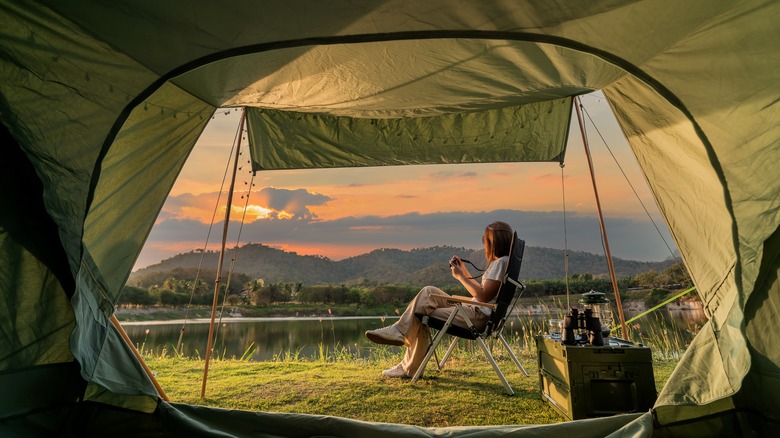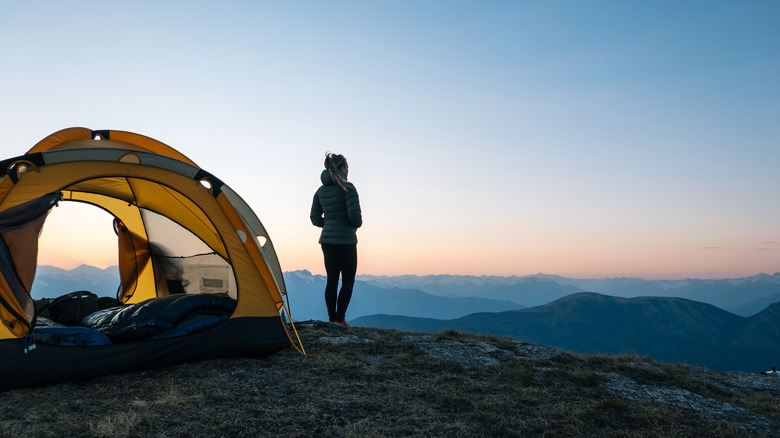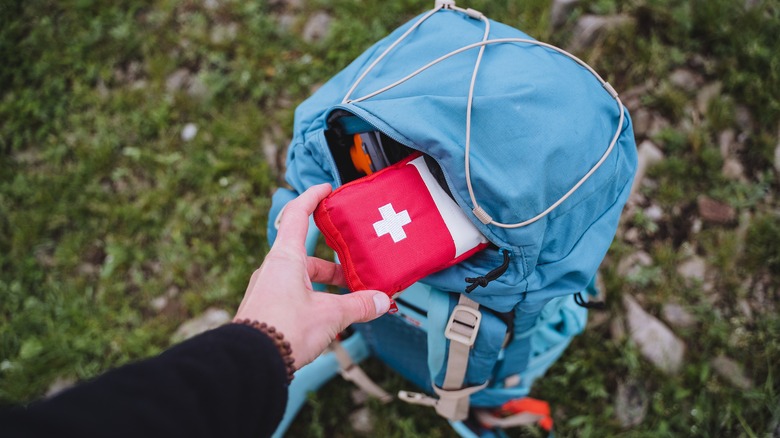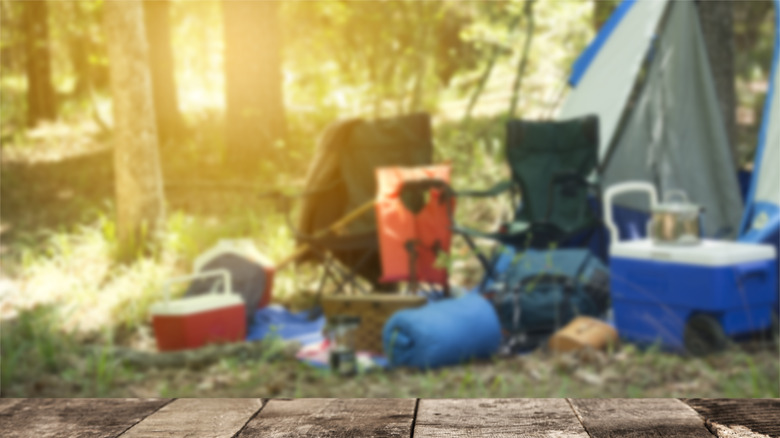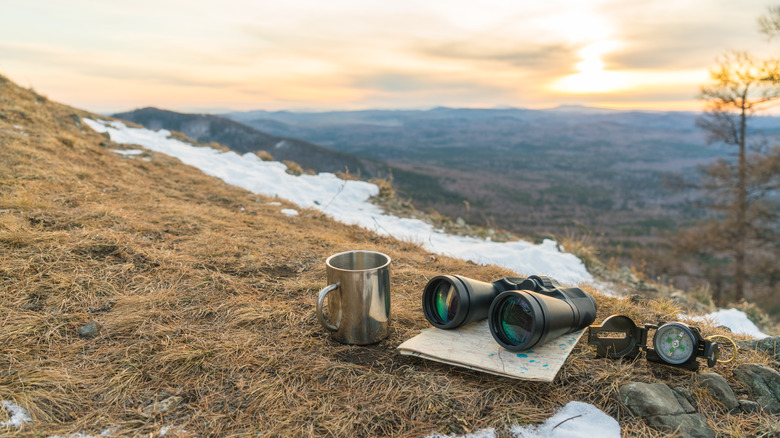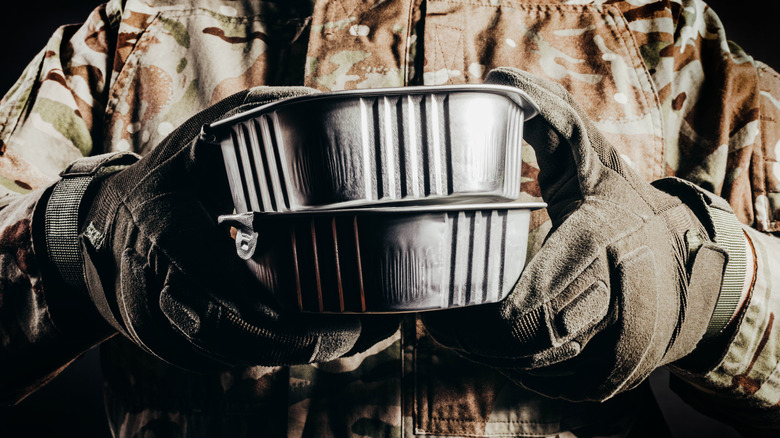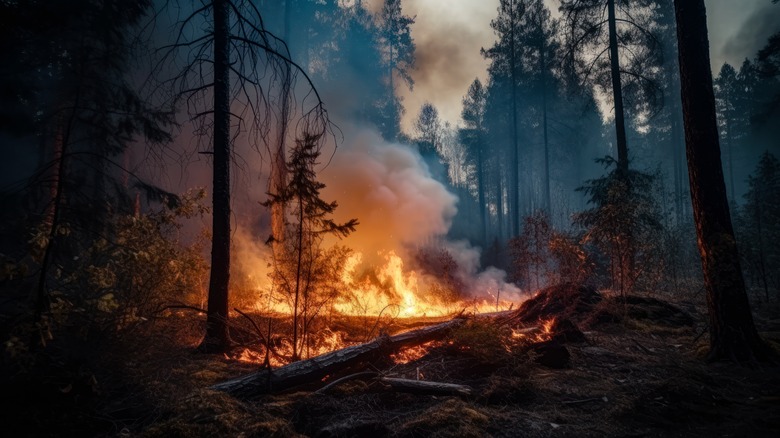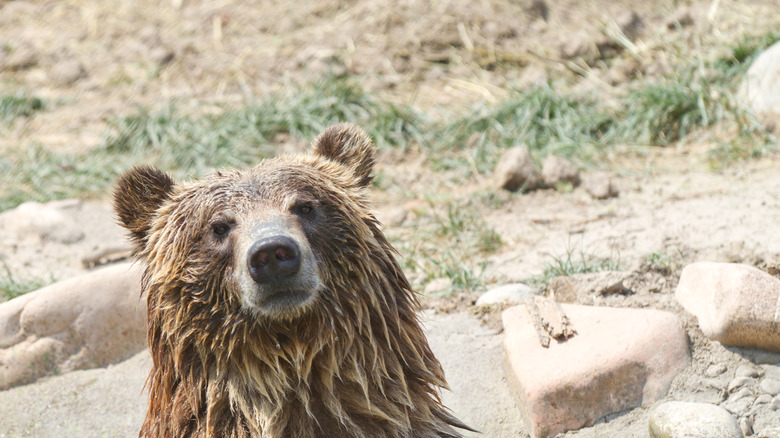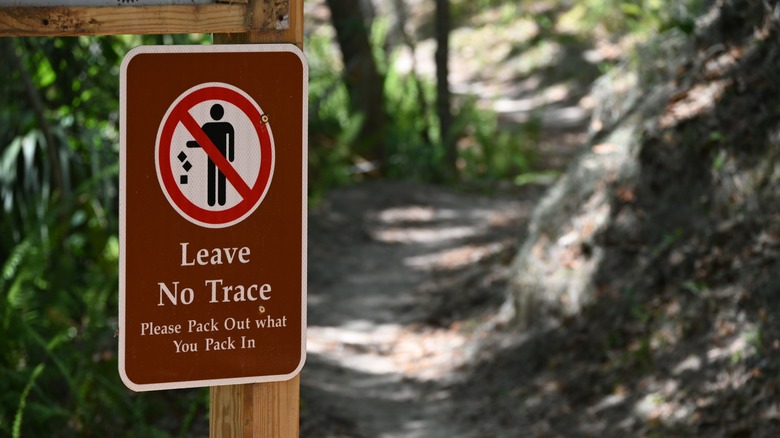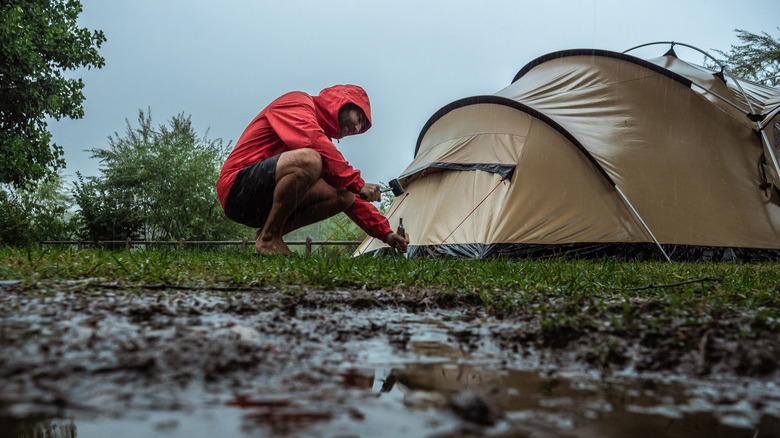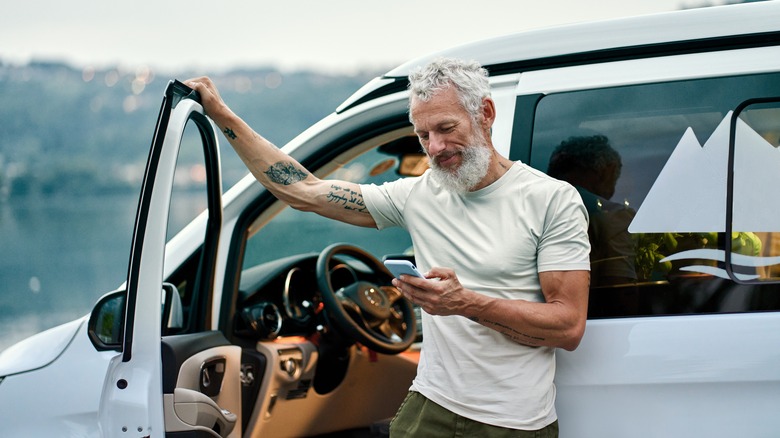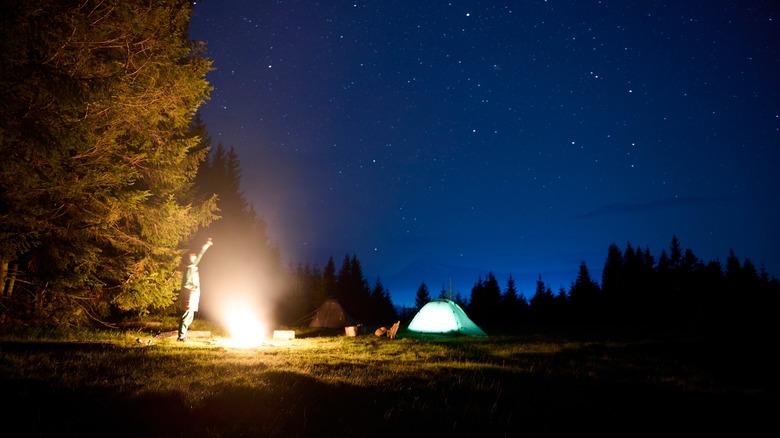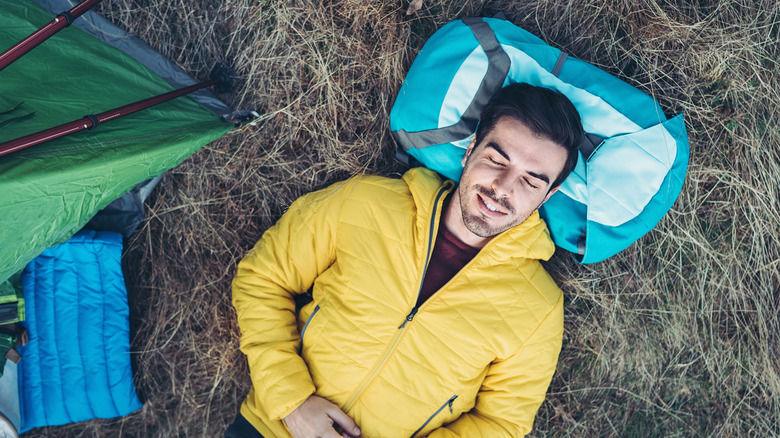What You Need To Know Before Your First Time Camping Alone
There's something undeniably liberating about the idea of venturing into the wilderness alone — packing up your gear, leaving behind the noise and distractions of everyday life, and immersing yourself in the quiet beauty of nature. Solo camping offers a unique opportunity for introspection, self-discovery, and adventure, but for those embarking on this journey for the first time, it can also be a daunting prospect.
Fear not, fellow adventurer, for this guide is crafted specifically for you — the intrepid souls venturing into the wilderness solo for the very first time. Whether you're a seasoned outdoor enthusiast looking to test your skills or a curious newcomer eager to experience the magic of solo camping, this guide will equip you with the knowledge, confidence, and inspiration you need to embark on your solo camping journey with excitement, preparedness, and joy.
So, leave your worries behind and join us as we explore the world of solo camping. A journey filled with solitude, self-reliance, and boundless possibility awaits! From choosing the perfect campsite to mastering essential outdoor skills, we'll cover everything you need to know to make your first solo camping adventure a memorable and rewarding experience.
Where you will set up camp
Choosing the perfect campsite location is a crucial step in ensuring a safe and enjoyable camping experience. Before setting out, research potential camping locations. Look for campgrounds or wilderness areas that align with your scenic preferences and experience level. Perhaps you'd even like to start with a campsite you've been to before with others so that you're familiar with the grounds. Determine how far you're willing to travel on your own and consider the accessibility of the campsite. If you're hiking to your campsite, assess the distance and difficulty of the trail. For car camping, ensure the site is accessible by vehicle and check for any parking restrictions.
Evaluate the terrain and landscape of potential campsites. Look for level ground to pitch your tent and avoid areas prone to flooding or runoff during rainstorms. Consider the natural features of the area, such as scenic views, forests, or meadows, and choose a spot that appeals to you. On top of that, remember that access to water is essential for drinking, cooking, and cleaning. If possible, choose a campsite that has an accessible and moving freshwater source, such as a river, lake, or stream, while maintaining a safe distance (via Bearfoot Theory).
Last, consider your preferences for privacy and seclusion when choosing a campsite. Some campers enjoy and seek out the solitude of remote wilderness areas, while others prefer the social atmosphere of developed campgrounds.
How to handle emergencies
Emergency preparedness is paramount when camping solo, as you must rely solely on yourself to handle any unexpected situations that may arise. Imperative for unforeseen physical injuries is a well-equipped first aid kit containing essential supplies such as bandages, adhesive tape, antiseptic wipes, gauze pads, tweezers, scissors, pain relievers, allergy medication, and any personal medications you may need. Familiarize yourself with the contents of your first aid kit and how to use them effectively.
Before leaving on your solo adventure, inform a trusted friend or family member about your camping plans, including your itinerary, expected return date, and emergency contact information. Provide them with details of your campsite location and any alternate routes you plan to take. Check in with them regularly to update them on your whereabouts.
In the event that things turn for the worse, be sure to have an emergency plan handy that outlines the steps you'll take in different scenarios, such as getting lost, encountering wildlife, or experiencing a medical emergency. Pack emergency shelter options such as a lightweight tent, bivy sack, or emergency space blanket to protect yourself from the elements in case you're unable to return to your campsite. Make sure you know how to set up your shelter quickly if needed. As well, carry an ample supply of drinking water and non-perishable food items to sustain yourself in case of emergencies or unexpected delays. Purify water from natural sources using a portable water filter or purification tablets to avoid waterborne illnesses.
That your gear is in good condition
Checking the condition of your camping gear before embarking on any outdoor adventure is crucial for ensuring a safe and enjoyable experience. Properly maintained gear can make all the difference between a successful camping trip and one fraught with challenges.
First, ensure that you have all the gear you'll need for your trip. This will likely include a tent, sleeping gear, cooking equipment, your backpack, and clothes at the minimum. Inspect all of these items for tears, holes, missing components, or signs of wear. Be sure to test the function of each piece of equipment, too, instead of just conducting a visual examination. This includes testing zippers, turning on electric devices to see that they do, in fact, turn on, or making sure pieces fit together the way they are intended to. If you do notice damage, mend it before you head out, or where items are completely unusable, replace them.
Of course, as many avid campers know, the worst can happen once you're already three days into your 12-day expedition. Backpacks can snag on tree branches, or tent poles can snap from being tugged on too hard. For these scenarios, a patch kit is one of a few essentials to pack when hiking or camping. They contain items that can help you make repairs quickly.
How to navigate and orient yourself
Navigation skills are essential for embarking on a solo camping adventure, especially if you're heading deep into the wilderness. Having the ability to navigate effectively not only ensures you reach your destination safely but also enhances your overall outdoor experience so that you feel secure and confident whilst exploring areas where cell service may not be reliable.
First and foremost, all outdoor adventurers should know how to read a map. Though electronic GPS devices come in quite handy, it is important to understand their limitations, such as battery life, signal reception, and accuracy in dense forests or mountainous terrain. As such, familiarize yourself with topographic maps and understand the symbols, contour lines, and scale. Learn how to interpret map features such as terrain, water sources, trails, and landmarks. Along with a map, invest in a quality compass and learn how to use it effectively for navigation. Practice orienting the map to match the direction you're facing using a compass or natural features. Use the compass in conjunction with a map to determine your location, plot waypoints, and navigate to specific destinations.
Though this rudimentary style of orienteering may seem unnecessary, given the technological advancements we have made in the last decade, they are a surefire technique that, once mastered, will be incredibly beneficial. Over time, you'll develop the ability to navigate by observing natural features and landmarks in the landscape and how to use those markers as reference points to maintain your bearings.
How to prep and store your food safely
Whether you're car camping, backpacking, or enjoying a picnic in the park, following proper food safety and storage practices is essential for maintaining your health and minimizing environmental impact. Opt for non-perishable items that don't require refrigeration to make storage a little easier. Use airtight containers or resealable bags to prevent contamination and spoilage. If you must pack perishable items, use insulated coolers or cooler bags with ice packs to keep perishable foods cold and fresh for longer. Store raw meats, poultry, and seafood separately from ready-to-eat foods to prevent cross-contamination. Avoid leaving stored food out in the sun or at room temperature for extended periods, especially in hot weather.
When cooking, try to separate items to avoid cross-contamination. Use a portable stove, campfire, or grill to cook meats, poultry, and seafood to the recommended internal temperatures. It's a good idea to use a food thermometer to ensure that cooked meats reach a safe internal temperature of 165°F (74°C) to kill harmful bacteria. Once the food is ready, sanitize cooking equipment after each use to prevent bacterial growth and food contamination.
After your meals, pack out all trash, food scraps, and leftover food to minimize environmental impact and prevent wildlife from scavenging. Use designated trash receptacles or bring trash bags to pack out your waste and dispose of it properly when you return home. Avoid burying food scraps or leaving them exposed, as this can attract wildlife and disrupt the natural ecosystem.
Fire safety protocol
Fire safety is paramount when camping, as campfires pose risks if not managed properly. Before lighting a fire, familiarize yourself with local fire regulations, including any bans or restrictions in the area. Choose a safe location for your campfire, away from overhanging branches, dry vegetation, and flammable materials. Check for designated fire pits or fire rings in campgrounds. If none are available, create a makeshift fire pit by creating a ring of rocks or soil to contain the fire.
Reserve America recommends using only firewood sourced from the area where you're camping or purchasing firewood from certified vendors to prevent the spread of invasive pests and diseases. Once you have all your materials, construct your campfire in a teepee, log cabin, or pyramid shape. Use fire starters such as newspaper, kindling, or fire starter cubes to ignite the fire safely. Add fuel gradually and avoid overcrowding the fire pit to maintain control and prevent sparks and embers from escaping. Keep a bucket of water, a fire extinguisher, or a shovel nearby to extinguish the fire in case of emergencies.
Never leave a campfire unattended, even for short periods. Assign a responsible adult to monitor the fire at all times and ensure it remains contained and under control. Allow the campfire to burn down to a bed of coals before extinguishing it. Once it has been put out, feel the ashes with your hand to confirm they are completely extinguished before leaving the fire site.
How to handle wildlife encounters
While wildlife encounters can be thrilling and rewarding, they also carry inherent risks, some stemming from myths about such encounters. Educating yourself is crucial to prioritize safety for both yourself and the animals. Before venturing into the wilderness, familiarize yourself with the wildlife species inhabiting the area. Learn about their behavior, habitat preferences, and potential risks. Adhere to park regulations and guidelines on wildlife encounters, respecting posted signs and warnings.
Carry bear spray, noise-makers, or wildlife deterrents when hiking or camping in areas with large mammals. Know how to use these tools effectively, staying composed during unexpected wildlife encounters. Stay vigilant for signs of wildlife activity like tracks or vocalizations, maintaining a safe distance. Avoid approaching or feeding animals, which can habituate them to human presence and lead to dangerous encounters. If faced with aggressive wildlife behavior, such as a bear near your campsite or a mountain lion on the trail, promptly report it to park authorities. Do not attempt to handle the situation alone; follow the safety instructions provided.
Respect wildlife habitat by sticking to designated trails, avoiding sensitive areas, and minimizing environmental impact. Steer clear of nesting sites, dens, or feeding areas, and give wildlife ample space to move freely without feeling threatened. If encountering wildlife, remain calm, avoiding sudden movements or loud noises. Assess the situation from a safe distance, discerning the animal's behavior before acting. By being informed and respectful of wildlife and their habitats, you can enjoy the wilderness responsibly while minimizing risks for both yourself and the animals.
Follow the Leave No Trace principles
Leave No Trace (LNT) principles serve as ethical guidelines to minimize human impact on the environment during outdoor activities. It's essential to familiarize yourself with these seven principles. Firstly, plan ahead and prepare. Research your destination and understand regulations, weather forecasts, and potential hazards. Plan your trip thoughtfully, selecting appropriate gear, packing essential supplies, and choosing durable campsites. Secondly, travel and camp on durable surfaces. Stick to designated trails and campsites to prevent damage to fragile vegetation and soil. Another principle is to leave what you find, preserving the natural beauty and integrity of outdoor spaces by leaving rocks, plants, and artifacts undisturbed. Take only photographs and memories, refraining from collecting souvenirs or disturbing the environment.
Proper waste handling and hygiene practices are crucial in the wilderness. Always pack out all trash, including food scraps and toilet paper, and dispose of it properly at home. For human waste, use the cat hole method to dispose of and carry out used toilet paper in a sealable bag. The fifth and sixth principles focus on minimizing campfire impacts and respecting wildlife, as you've already learned.
Lastly, be considerate of other visitors. Keep noise levels down, yield to passing hikers, and provide space for others to enjoy the natural environment peacefully. By following these principles, outdoor enthusiasts can ensure minimal impact while maximizing the enjoyment of nature.
What to do if the weather goes awry
Before heading outdoors, it's crucial to check the weather forecast for your destination and surrounding areas. Pay attention to predicted temperature highs and lows, precipitation chances, wind speeds, and any severe weather alerts or warnings. Pack essential gear to prepare for various weather scenarios you may encounter. Bring rain gear like a waterproof jacket, pants, and pack cover to stay dry during rain showers. Carry extra insulation such as a fleece or down jacket to stay warm in cold temperatures, and don't forget a hat and gloves for added warmth.
Dress in layers and choose clothing suitable for the expected weather conditions. Opt for moisture-wicking base layers to keep sweat away from your skin, insulating layers to retain body heat, and waterproof outer layers to protect against rain, wind, and snow. Carry a lightweight shelter like a tent, tarp, or emergency bivy sack to provide protection from the elements in case of sudden weather changes or emergencies.
Monitor weather forecasts using a smartphone app, portable weather radio, or satellite communicator, and be prepared to adjust your plans accordingly based on changing conditions. Familiarize yourself with escape routes and emergency exits in case of severe weather, flash floods, or other natural disasters. Identify safe locations to take shelter, such as sturdy buildings, caves, or low-lying areas away from potential hazards. Avoid high-risk activities like hiking in exposed areas during thunderstorms, crossing rivers or streams during flash floods, or camping in avalanche-prone terrain during unstable snow conditions.
How to protect yourself if dangerous situations arise
Planning for environmental and physical stressors seems a given when it comes to outdoor adventures, but not everyone wants to admit that there are other dangers that could be lurking between the trees. If you're venturing solo into the wilderness, especially for the first time, inform a trusted friend or family member about your plans. Share your itinerary, intended route, and expected return time, along with detailed information about your destination and emergency contact numbers.
Equip yourself with communication devices like a fully charged cell phone, satellite communicator, or personal locator beacon (PLB) to stay connected in case of emergencies. Ensure you have adequate signal coverage or satellite reception in your travel areas. Stay vigilant and maintain awareness of your surroundings, particularly when hiking or camping alone. Trust your instincts and heed any feelings of danger or discomfort. If something seems off, prioritize caution and take appropriate measures to ensure your safety. Consider taking self-defense classes or carrying self-defense tools like a whistle, pepper spray, or personal alarm for added security. Learn basic self-defense techniques and how to effectively utilize your chosen tools.
Minimize risks by avoiding unnecessary hazards and risky behaviors, such as straying off-trail alone. Prioritizing safety and preparedness can help mitigate the potential dangers of camping solo.
Essential hygiene practices
Maintaining cleanliness in remote wilderness settings is crucial for preventing illness, promoting personal well-being, and minimizing environmental impact. Start by washing your hands regularly with soap and clean water, particularly before handling food or after using the restroom. Ensure the safety of drinking water by treating it with filters, purifiers, or chemical tablets to remove harmful contaminants. Carry enough water or plan refills from reliable sources, avoiding untreated water from natural sources. If water is scarce, opt for biodegradable soap or hand sanitizer.
Don't neglect personal hygiene routines like brushing your teeth, washing your face, and combing your hair, even while camping or hiking. Pack travel-sized toiletries to stay fresh and comfortable. Keep your feet clean, dry, and blister-free by wearing moisture-wicking socks and breathable footwear. Pack a foot care kit with essentials like moleskin and blister pads for on-trail emergencies.
Adhere to Leave No Trace principles and practice proper waste management even when going to the bathroom in the wilderness by disposing of human waste in designated areas or by digging cat holes away from water sources. In the case you will be menstruating while camping, pack an ample supply of products and dispose of used items properly. Consider eco-friendly options to reduce waste and environmental impact.
How to communicate efficiently
Communication devices are vital for staying connected and ensuring safety during outdoor adventures, especially in remote areas like hiking, camping, or backpacking. These reliable tools provide peace of mind and enable contact with emergency services, friends, and family.
A cell phone serves as a versatile device for calls, texts, and internet in areas with cellular coverage. Even those seeking respite from technology often bring a cell phone on camping trips. Opt for a rugged, waterproof phone with long battery life, and download offline maps and GPS apps for areas with limited reception. However, it may not be the most reliable option deep in the wilderness.
Portable walkie-talkies offer short-distance communication without relying on cellular networks. Choose models with long range and carry spare batteries or chargers for longer trips. Satellite phones provide global coverage in areas lacking cell service, ideal for extended expeditions or international travel. They require a clear sky for satellite connection. Compact satellite communicators combine GPS tracking, messaging, and SOS alerts. Brands like Garmin in Reach and SPOT offer real-time tracking and two-way messaging in remote areas (via Mom Goes Camping). Personal Locator Beacons (PLBs) transmit distress signals to search and rescue authorities via satellite, activated only in life-threatening emergencies. Emergency whistles are simple and lightweight devices for attracting attention during crises. Keep one accessible for signaling distress if lost or injured.
Nighttime safety measures
Nighttime adventures offer excitement but also unique challenges and risks, especially when camping alone. To ensure a safe and enjoyable experience, arrive at your campsite with ample daylight remaining. This allows time to set up camp, gather firewood, and become familiar with your surroundings before darkness falls.
Carrying a reliable source of illumination, such as a headlamp, flashlight, or lantern, is essential for navigating safely after dark, particularly when camping solo. Make sure your lighting device is fully charged or has fresh batteries, and keep it easily accessible at all times. Stay vigilant for wildlife activity, particularly nocturnal animals like bears, cougars, or coyotes, which may be more curious or bold when encountering a lone camper.
Minimize risky behavior by avoiding hiking or exploring unfamiliar terrain after dark, especially when camping alone. Stick to designated trails and familiar areas to reduce the risk of getting lost or encountering hazards. With careful preparation and awareness, nighttime camping alone can be a rewarding experience, allowing for solitude and connection with nature under the stars.
How to enjoy time on your own
While the idea of venturing into the wilderness alone may seem daunting, solo camping can be profoundly rewarding when approached with the right mindset. Solo camping provides a unique chance for introspection, self-discovery, and connection with nature. By cultivating a positive outlook and focusing on enjoyment, solo campers can fully embrace the solitude, beauty, and freedom of the outdoors.
View solo camping as an opportunity for self-reflection and personal growth. Disconnect from daily distractions and immerse yourself in nature's beauty. Practice mindfulness by engaging your senses and savoring the wonders of the natural world. Take time to appreciate the small details and moments.
Remain flexible and open-minded, understanding that not everything may go as planned. Adapt to challenges and changing conditions as they arise. Take pride in your ability to navigate, set up camp, and care for yourself. Embrace the sense of accomplishment that comes with mastering outdoor skills. Maintain a positive attitude in the face of challenges. Focus on solutions and celebrate your ability to adapt and overcome obstacles. Cherish the moments when you feel connected to nature, allowing them to remind you of the magic of the wilderness. Express gratitude for the opportunity to explore nature on your own terms.
